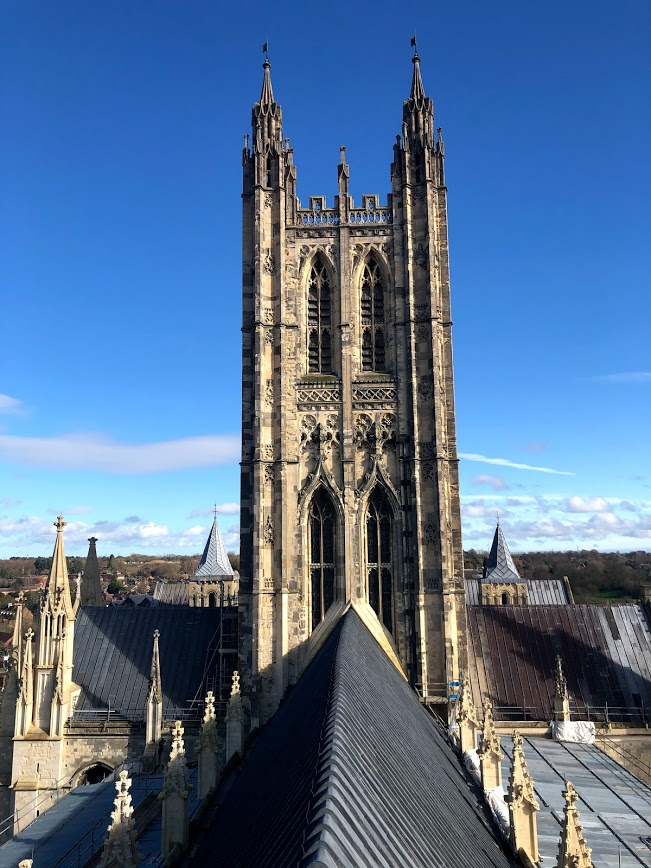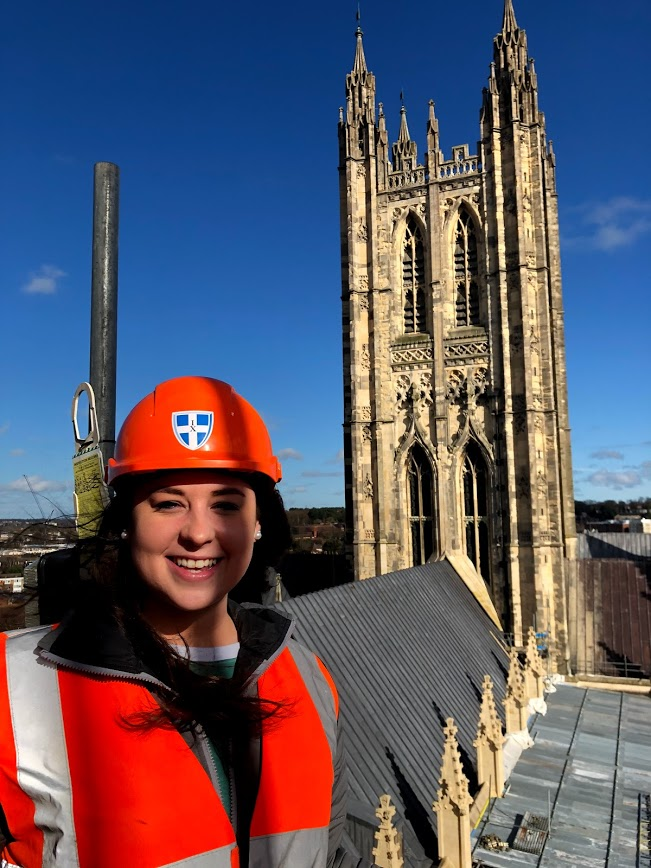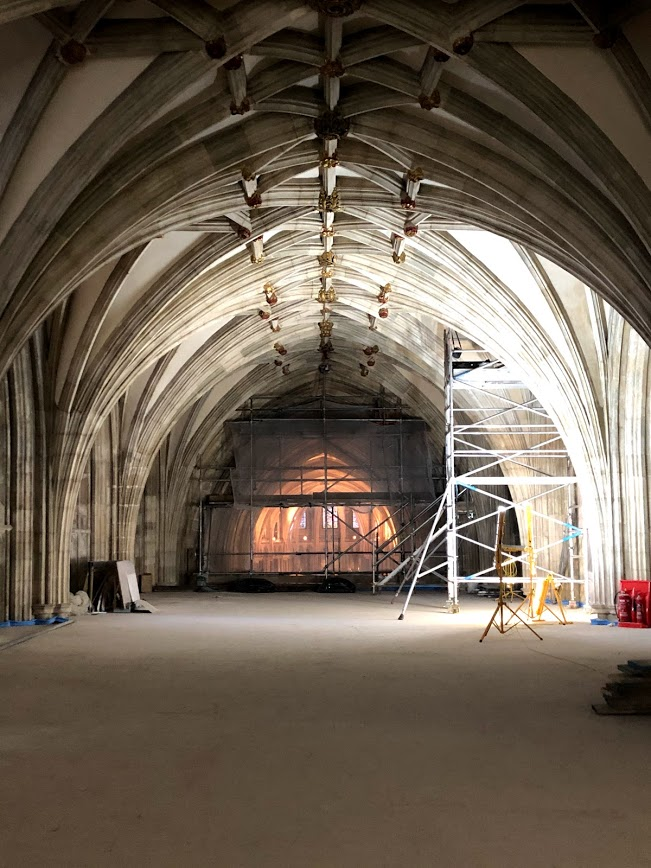Recently, the students of the MSc in Architectural Conservation visited Canterbury Cathedral. Our student, Chandler Hamilton writes: We had the chance to tour the sections of the Cathedral that are under repair. All these areas are normally unavailable to the public. I focused on Gothic Architecture in my undergraduate degree, and for me, this was a unique opportunity to get a behind-the-scenes tour of a structure that I have studied intensely in the past. The tour started off with meeting the Head of Conservation and Site Manager, Heather Newton, who basically has my dream job! She gave us an introduction to the conservation project and an itinerary for the day. The project that started in 2016 and is set to finish around October 2021 is a 25-million-pound development that is focusing on the roof of the cathedral.

We went all the way up to the top of the scaffolding on the western towers and saw a breath-taking view of the roof and the city of Canterbury. At the top you can see the difference in each piece of stone by how eroded it is. Since the cathedral was first developed, stone has been replaced throughout each century. One interesting fact that I did not know was that in the early-20th century, there was a shortage of materials and funding, so the builders created stone-like blocks out of cement instead. There is a course on the northern side of the cathedral where you can visibly see the cement.

We then moved down into the top of the nave where they are currently repainting the ribbed vaults and sealing off cracks. Not only was this the closest I have ever been to ribbed vaults and could clearly see every detail, but there was also an incredible view of the choir to look out to.

The last stop on this tour was the inside of the roof to look at the timber structures that are supporting the buttresses. Each piece of timber is extensively investigated for any signs of decay, rot, or damage, then decided on if it needs to be replaced or not. They are trying to preserve as much of the Victorian wood as possible, so they only replaced the end where two pieces connect.

